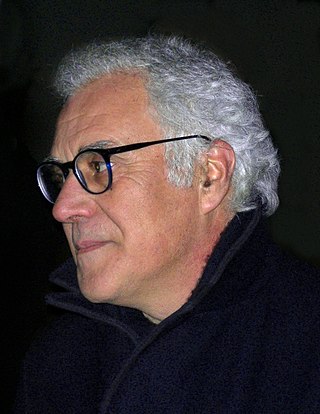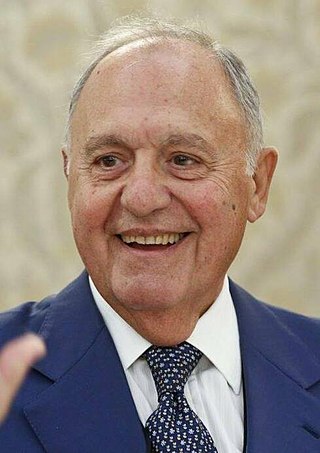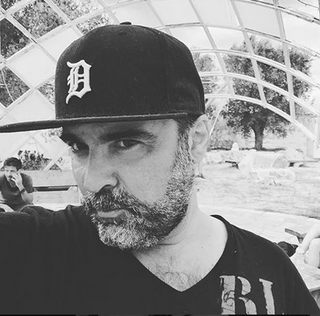
The Palazzo Barberini is a 17th-century palace in Rome, facing the Piazza Barberini in Rione Trevi. Today, it houses the Galleria Nazionale d'Arte Antica, the main national collection of older paintings in Rome.

Villa Pisani at Stra refers to the monumental, late-Baroque rural palace located along the Brenta Canal at Via Doge Pisani 7 near the town of Stra, on the mainland of the Veneto, northern Italy. This villa is one of the largest examples of Villa Veneta located in the Riviera del Brenta, the canal linking Venice to Padua. The patrician Pisani family of Venice commissioned a number of villas, also known as Villa Pisani across the Venetian mainland. The villa and gardens now operate as a national museum, and the site sponsors art exhibitions.

Franco Califano was an Italian lyricist, composer, singer-songwriter, author and actor. His songs sold about 20 million records during his career.
The Battle of Valle Giulia is the conventional name for a clash between Italian militants and the Italian police in Valle Giulia, Rome, on 1 March 1968. It is still frequently remembered as one of the first violent clashes in Italy's student unrest during the protests of 1968 or "Sessantotto".

Mimmo Paladino is an Italian sculptor, painter and printmaker. He is a leading name in the Transvanguardia artistic movement and one of the many European artists to revive Expressionism in the 1980s.
Igor Sibaldi, born from Russian mother and Italian father, is an Italian writer, scholar of theology and history of religion.
The Acqui Award of History is an Italian prize. The prize was founded in 1968 for remembering the victims of the Acqui Military Division who died in Cefalonia fighting against the Nazis. The jury is composed of seven members: six full professors of history and a group of sixty (60) ordinary readers who have just one representative in the jury. The Acqui Award Prize is divided into three sections: history, popular history, and historical novels. A special prize entitled “Witness to the Times,” given to individual personalities known for their cultural contributions and who have distinguished themselves in describing historical events and contemporary society, may also be conferred. Beginning in 2003 special recognition for work in multimedia and iconography--”History through Images”—was instituted.

Paolo Savona is an Italian economist, professor, and politician. He was the Italian Minister of European Affairs from 1 June 2018 until 8 March 2019, his second stint in government after 1993–1994. During the 2010s, Savona became one of the most fervent Eurosceptic economists in Italy.

Danilo Eccher is an Italian art critic and curator.

Gianni Minà was an Italian journalist, writer, magazine editor, and television host. He collaborated with both Italian and International newspapers and magazines; produced hundreds of reports for RAI ; conceived and hosted television programs, as well as produced successful documentary films on the lives of Che Guevara, Muhammad Ali, Fidel Castro, Rigoberta Menchú, Silvia Baraldini, Subcomandante Marcos and Diego Maradona.
Filippo Cannata is an Italian lighting designer, born in Brescia in 1962.
Emilio Villa was an Italian poet, visual artist, translator, art critic and Bible scholar. His poems reflected his knowledge of modern and ancient languages, including Italian, French, English, Latin, Greek, Hebrew, Sumerian, and Akkadian.
Paola Ghirotti is an Italian photographer. For more than twenty years thoroughly investigates the environment of Japanese traditions: unGiappone® is the trademark, which maintains Paola Ghirotti's pictorial archive, her writings and, her ongoing photographic exploration of traditional cultures.
The 1968 movement in Italy or Sessantotto was inspired by distaste or discontent with traditional Italian society and by similar international protests. In May 1968 all universities, except Bocconi, were occupied. In the same month a hundred artists, including Gio Pomodoro, Arnaldo Pomodoro, Ernesto Treccani and Gianni Dova occupied for 15 days the Palazzo della Triennale.
The Fasci di Azione Rivoluzionaria, abbreviated FAR, was an Italian neofascist paramilitary organization founded in 1946. FAR was the first neofascist group in Italy which led an armed struggle after the collapse of the Fascist Regime.

The Museo d'Arte Contemporanea Donnaregina, often known as Museo Madre, or Donnaregina Contemporary Art Museum, is a museum of contemporary art in Naples, in Campania in southern Italy. It is housed in the Palazzo Donnaregina, which was adapted for it by the Portuguese architect Álvaro Siza Vieira. The museum opened in 2005.

Cristina Cesarina Milani is a Swiss psychologist, writer, and entrepreneur. She was the president of World Kindness Movement (WKM) and founder of two non-profit organizations, Gentletude Switzerland and Gentletude Onlus (Italy). Cristina was also the founder & CEO of HeS-Human engineering Systems and co-founder of Work Style Magazine. She is the partner of GWH SA, a brand building company in Lugano, Switzerland, for which she has been working since 1999.

Diego Mancino is an Italian musician and singer-songwriter.
Eugenio Lo Sardo is a professor, scholar, archivist and curator. Director of the Rome State Archives (2009–2014), and subsequently of the Italian National Archives (2014–2018), he has curated a number of major exhibitions. His prime area of interest is the history of European civilization at its origins and at its borders.
Elisa Montessori is an Italian painter.









